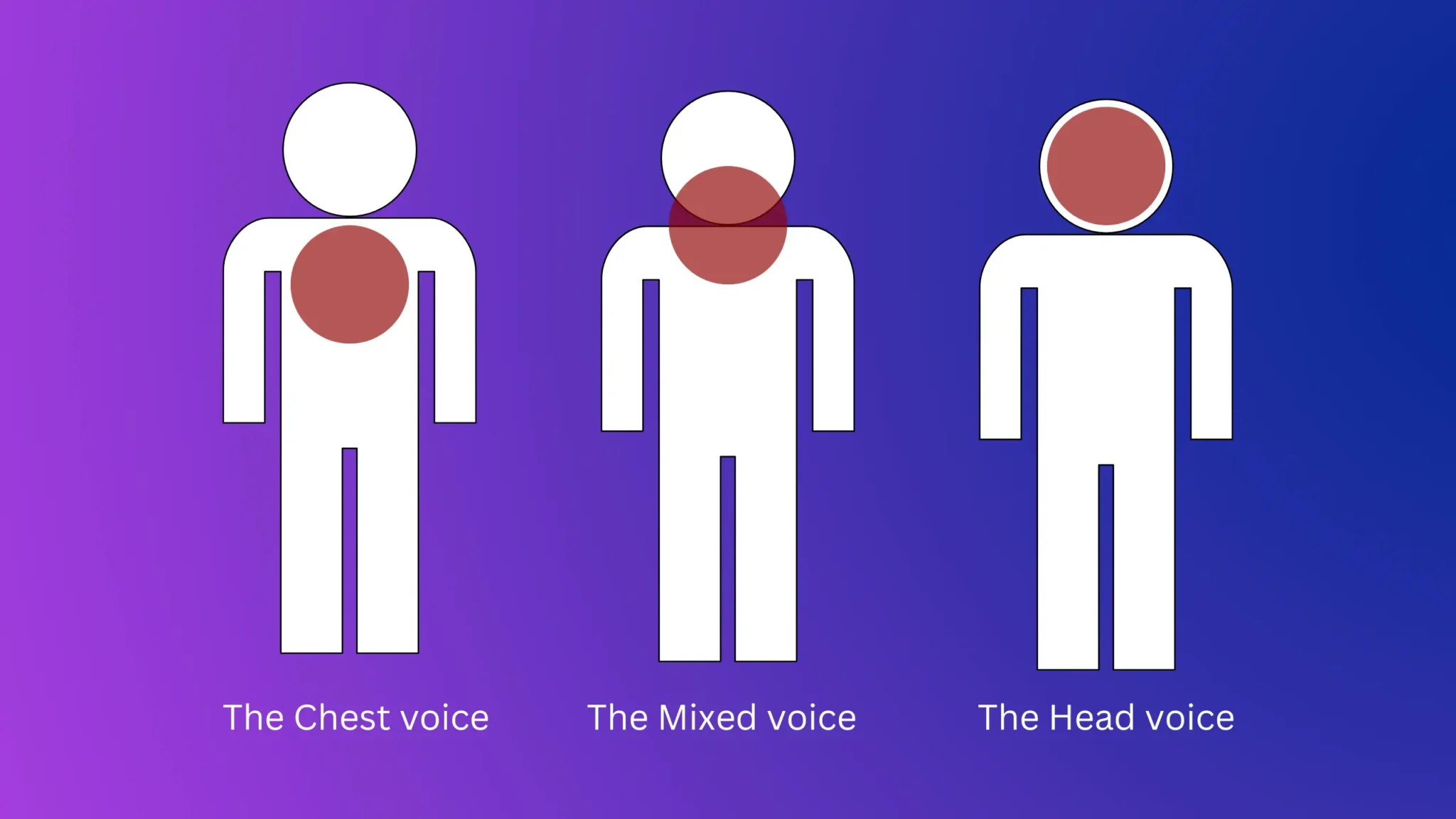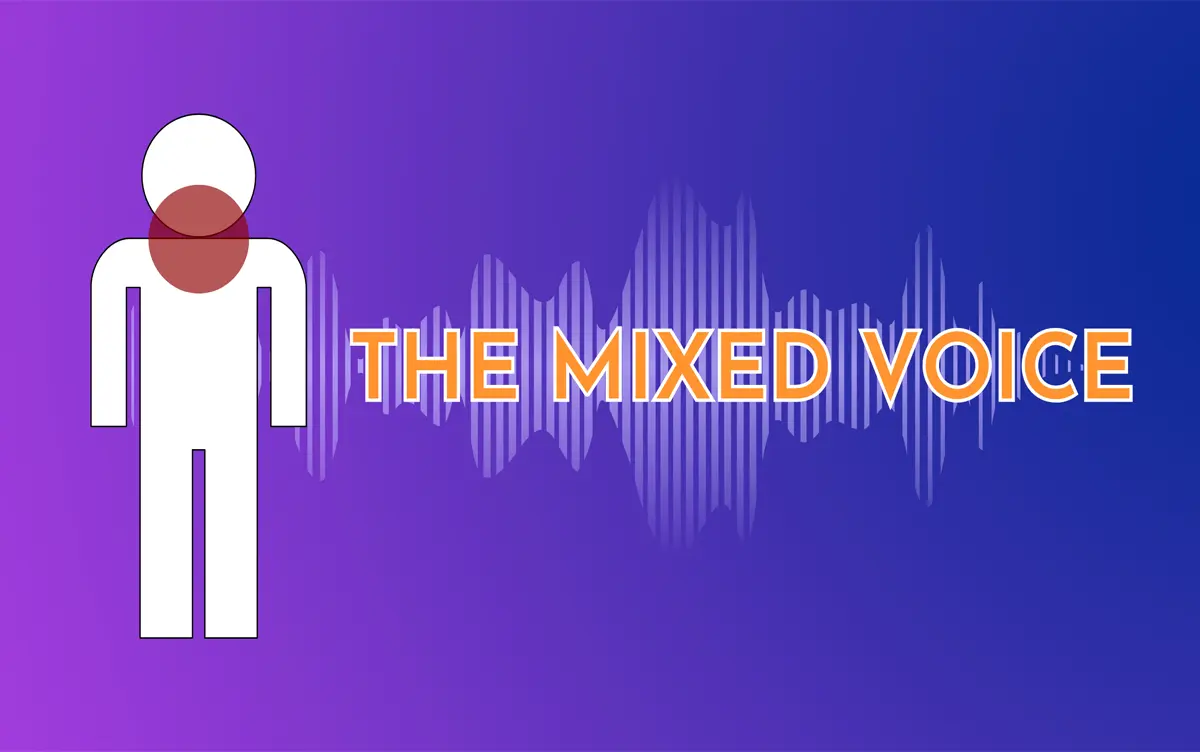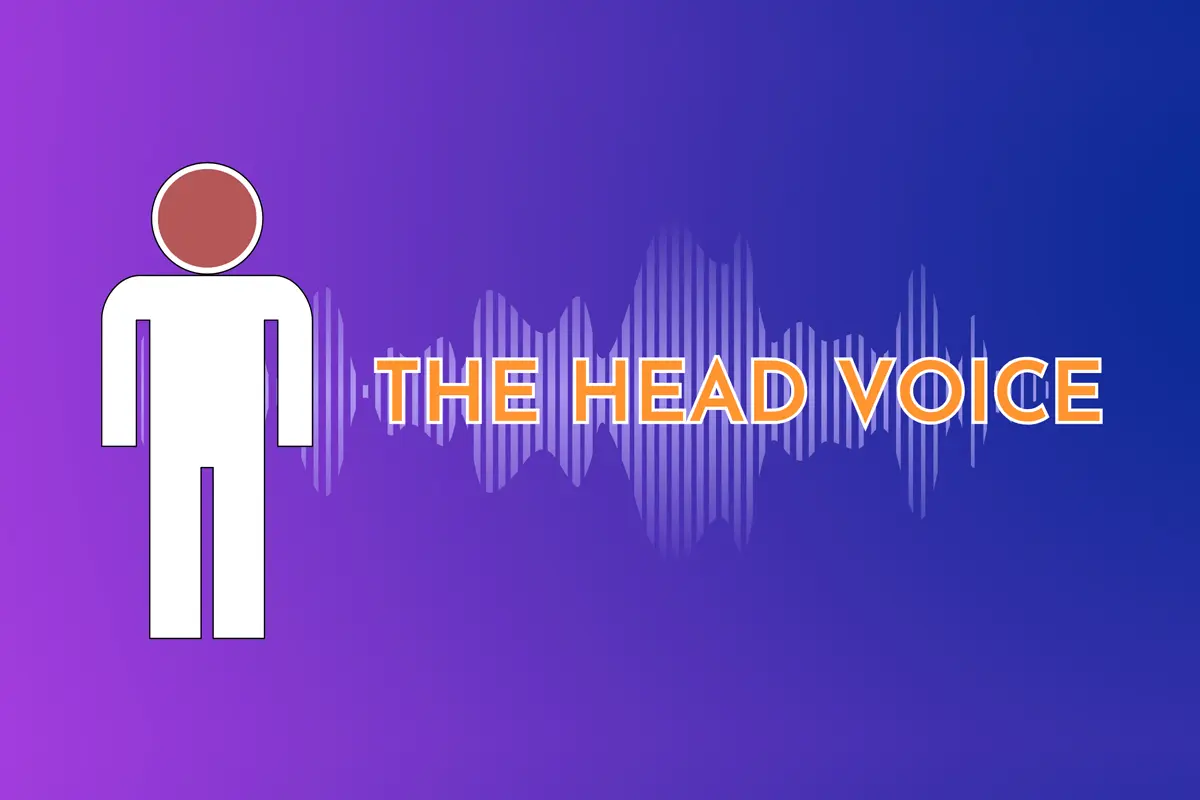Let us explore into the fascinating world of head voice, a crucial term in vocal teaching that brings a unique sound quality, often linked with those higher notes we all love.
This article is your guide to uncovering the history, how it works in your body, the best ways to teach it, and clearing up some myths.
We aim to give you a complete picture of this essential part of the singing technique.
Now, who’s this article for?
If you’re into singing, teaching others to sing, or love music and want to know more, you’re in the right place! Whether you’re a seasoned singer or just starting, we’ve got you covered.
We’re keeping things casual here, ensuring it’s easy to follow. So, get ready to explore the ins and outs of head voice with us!
Definition and Historical Context
Let me take you back to when I first discovered head voice. During one of my early singing lessons, my choir coach mentioned this term that I hadn’t heard before.
She described it as a magical mechanism that gives your voice that sparkling quality when hitting those high notes. Intrigued, I delved deeper into understanding what head voice meant.
So, what is head voice? According to vocal pedagogy,
“Head voice is a term used to describe a specific vocal register or mechanism that produces a distinct sound quality, characterized by a bright, ringing sensation in the head, and is often associated with higher pitches in the vocal range.”
It’s like unlocking a new dimension in your voice!
Now, let’s talk about the historical roots of head voice. Centuries of vocal instruction trace its origins from ancient times to the modern-day teachings of vocal coaches worldwide.
Historical figures like Quintilian and Johannes de Garlandia laid the groundwork for our understanding of head voice, shaping how it’s taught and practiced today.
Curious to learn more? Check out this reference for further insights into the history and definition of head voice.
History and Evolution of Vocal Pedagogy
The history of vocal pedagogy is rich and diverse, marked by centuries of exploration, innovation, and refinement in understanding the human voice.
As we trace the evolution of vocal pedagogy, we gain valuable insights into the development of techniques and methodologies surrounding head voice instruction.
Ancient Origins
- Ancient civilizations such as Greece and Rome, where the art of rhetoric played a central role in education, can trace back the roots of vocal pedagogy.
Vocal training was integral to oratory and public speaking, emphasizing projection, clarity, and expression of ideas.
The Italian singing tradition shows that the concept of “voce di testa” (voice of the head) served as an early precursor to the modern understanding of head voice.
Medieval and Renaissance Period
- During the medieval and Renaissance periods, the Church played a significant role in vocal education, particularly in training choirs and singers for liturgical music.
Treatises on music theory and vocal technique, such as those by Guido of Arezzo and Johannes de Garlandia, provided foundational knowledge for singers and educators. The term “head voice” may have emerged during this time, although scholars have debated its precise origins.
Baroque and Classical Eras
- The Baroque and Classical eras witnessed further advancements in vocal pedagogy, with the emergence of opera as a prominent musical genre.
Singers such as Farinelli and Castrati were celebrated for their virtuosic performances, showcasing the expressive capabilities of head voice in the operatic repertoire.
Vocal treatises by authors like Manuel García and Giuseppe Concone offered insights into vocal technique and exercises for developing head voice.
19th and 20th Centuries
- The 19th and 20th centuries saw significant developments in vocal science and pedagogy, fueled by advancements in anatomy, physiology, and acoustics.
Pioneers such as Manuel García II and Francesco Lamperti made groundbreaking contributions to our understanding of vocal function and technique.
The concept of head voice became more refined, with distinctions made between different vocal registers and mechanisms of phonation.
Contemporary Perspectives
- In contemporary vocal pedagogy, the understanding of head voice continues to evolve, influenced by interdisciplinary research and technological advancements.
Voice science and biomechanics offer insights into head voice production’s physiological processes, informing modern teaching methodologies and exercises.
The integration of historical knowledge with current research shapes the approach of vocal instructors in training singers to develop a healthy and balanced head voice.
As we reflect on the history and evolution of vocal pedagogy, we recognize the enduring significance of head voice as a fundamental aspect of vocal technique.
Through centuries of exploration and innovation, singers and educators have honed their understanding of head voice, enriching the tapestry of vocal expression and performance.
Physiological Production

Let’s dive deeper into the fascinating mechanics of head voice production.
Your vocal cords undergo a subtle but crucial adjustment when you sing in a head voice.
Unlike the chest voice, where the vocal cords are thick and relatively relaxed, the vocal cords in the head voice thin out and stretch.
This change allows them to vibrate more rapidly, producing higher pitches with that characteristic bright and ringing quality.
The laryngeal muscles, particularly the thyroarytenoid and cricothyroid muscles, are instrumental in this process.
The cricothyroid muscle stretches and tenses the vocal cords. In contrast, the thyroarytenoid muscle helps control the overall tension and coordination of the vocal folds.
Imagine these muscles as the conductors of an orchestra, finely tuning and adjusting the vocal cords to produce the desired sound.
It’s a delicate balance of muscle control and coordination that results in the distinctive resonance and timbre of the head voice.
As you ascend into your head voice range, your vocal mechanism shifts, allowing the sound to resonate more prominently in the head cavities.
This resonance amplifies the higher frequencies, giving the head voice its brilliance and clarity.
Head voice production is a sophisticated interplay of muscle coordination, tension regulation, and resonance adjustment, all working together to create soaring, ethereal tones we love to hear.
Resonance and Timbre
Now, let’s explore the fascinating aspects of resonance and timbre in head voice.
Resonance refers to the amplification and enrichment of sound as it vibrates within the resonating cavities of the head and throat.
When you sing in a head voice, the sound resonates primarily in the sinus cavities, creating a bright, ringing sensation.
This resonance contributes to the distinctiveness of the head voice and enhances its clarity and projection.
For example, try humming a note in your chest voice and then in your head voice.
Notice how the sensation changes as the sound resonates in different areas of your head and throat.
In head voice, you’ll likely feel a buzzing sensation in your upper face and head, indicative of the resonance occurring in those cavities.
Timbre, on the other hand, refers to the unique quality or color of a sound.
People often describe the timbre of a head voice as bright, clear, and slightly thinner compared to the warmer, fuller timbre of a chest voice.
This difference in timbre allows singers to create contrast and variety in their vocal performances.
Quick tip: To enhance the resonance and timbre of your head voice, try experimenting with different vowel shapes and mouth positions.
Adjusting these factors can optimize the acoustics of your vocal tract, resulting in a more resonant and vibrant sound.
In summary, resonance and timbre play crucial roles in defining the character and quality of the head voice.
Teaching and Training
Teaching and training head voice requires a nuanced approach encompassing technical exercises and artistic expression.
- Vocal Exercises:
- Vocal instructors often use specific exercises to help students develop their head voice. These exercises may include sirens, lip trills, and scales that target the upper register.
- For example, try practicing sirens by starting from your chest voice and smoothly transitioning into your head voice, focusing on maintaining a connected and balanced tone throughout the range.
- Breath Support:
- Proper breath support is crucial for sustaining and controlling head voice tones. Instructors teach vocalists to engage their diaphragm and maintain steady airflow to support the higher pitches.
- Quick tip: Practice diaphragmatic breathing exercises to strengthen your breath support. Imagine filling your lower abdomen with air like a balloon as you inhale, then gently releasing the air as you sing.
- Artistic Interpretation:
- Beyond technical exercises, students are encouraged to explore the expressive potential of head voice in their repertoire. It includes understanding the emotional context of the music and using head voice to convey subtle nuances in tone and expression.
- For example, experiment with different dynamics and phrasing in a song to see how head voice can add depth and emotion to your performance.
- Feedback and Guidance:
- Vocal coaches play a crucial role in providing feedback and guidance to students as they develop their head voice. Constructive feedback helps singers refine their technique and overcome any challenges.
- Quick tip: Record yourself singing and listen back to identify areas for improvement. Pay attention to pitch accuracy, tone quality, and breath control, and adjust accordingly.
Controversies and Misconceptions
The head voice is not without its controversies and misconceptions in the realm of vocal technique. Let’s address some common misunderstandings and clarify the facts.
- Relation to Falsetto:
- One common misconception is that head voice and falsetto are the same. While they may sound similar, they involve different mechanisms of vocal production. Head voice utilizes a full vocal fold closure, while falsetto involves a partial closure, resulting in a lighter, breathier sound.
- For clarification, try singing a sustained note in both head voice and falsetto. Notice the difference in tone and quality between the two registers.
- Distinct “Head Register”:
- Another misconception is the idea of a distinct “head register” separate from head voice. Head voice is a specific vocal mechanism within the broader context of vocal registers. The terms “head voice” and “chest voice” refer to the resonance and coordination of vocal production rather than separate registers.
- To illustrate, visualize your vocal range as a continuum rather than distinct compartments. Head voice and chest voice are points along this continuum, with various shades and blends in between.
- Clarifying Misunderstandings:
- It’s important to dispel these misconceptions to better understand head voice and vocal technique. Educating singers about the differences between head voice and falsetto can help them develop a more versatile and balanced vocal technique.
- Quick tip: Research and understand the physiological differences between head voice and falsetto. This knowledge will empower you to navigate vocal technique discussions more confidently.
Vocal Registration and Mixed Voice
Understanding vocal registration and its relationship to head voice is essential for singers aiming to master their vocal technique.
- Vocal Registration:
- Vocal registration refers to dividing the vocal range into different registers, each characterized by its vibratory pattern and resonance. The two primary registers are chest voice and head voice. However, the vocal mechanism operates on a continuum rather than distinct boundaries.
- For example, explore your vocal range and notice the shifts in resonance and tone quality as you ascend from your chest voice to your head voice. Pay attention to how the sensation changes in your throat and resonating cavities.
- Mixed Voice:
- Mixed voice is the blending of chest and head voice resonance, resulting in a balanced and connected vocal tone across the entire range. It allows singers to navigate smoothly through their registers without noticeable breaks or shifts in tone quality.
- To develop your mixed voice, practice exercises that encourage blending and coordination between chest and head voice. Start by singing scales or arpeggios, maintaining a consistent tone throughout the range.
- Vocal Posture and Alignment:
- Proper vocal posture and alignment are crucial for accessing and maintaining a balanced mixed voice.
Aligning the body allows optimal breath support and vocal resonance, facilitating smooth transitions between registers.
- Quick tip: Stand or sit tall, keeping the spine elongated and the shoulders relaxed. Imagine a string pulling you gently upward from the crown of your head to promote alignment and openness in the throat.
- Transition Exercises:
- Incorporate transition exercises into your vocal warm-up routine to strengthen the coordination between chest and head voice.
For example, practice sliding smoothly from chest to head voice and back again, focusing on maintaining a seamless connection between the registers.
Practical Applications
Practical applications of head voice encompass a range of exercises, techniques, and performance strategies that allow singers to utilize this vocal register effectively and expressively.
- Scales and Arpeggios:
- Practicing scales and arpeggios in head voice is an excellent way to develop agility, flexibility, and control in the upper register.
As a vocal coach, I often encourage my students to start with simple scales and gradually increase the range and complexity as their proficiency improves.
One of my students struggled initially with reaching higher notes in her head voice. She gained confidence and expanded her vocal range through consistent practice of scales and arpeggios.
- Dynamic Variation:
- Experimenting with dynamic variation in head voice adds depth and expressiveness to your singing.
I teach my students to practice crescendos and decrescendos, exploring the full range of volume and intensity.
Recently, during a vocal workshop, one of my students applied dynamic variation to a challenging area in his head voice.
The emotional impact of his performance was palpable, and he received high praise for his expressive delivery.
- Articulation and Diction:
- Paying attention to articulation and diction ensures clarity and precision in your vocal delivery.
I often incorporate tongue twisters and vocal exercises on articulation into my students’ warm-up routines.
One of my students struggled with clarity in her head voice due to poor articulation. By practicing specific exercises targeting articulators, she improved her diction and saw a noticeable enhancement in her vocal clarity.
- Emotional Expression:
- Head voice is not just about technical proficiency; it’s also a tool for emotional expression and storytelling.
During coaching sessions, I encourage my students to experiment with different vocal colors, phrasing, and emotive gestures to convey the mood and message of a song.
One of my students, David, recently used his head voice to express vulnerability and longing in a heartfelt ballad. His emotionally resonant performance left the audience captivated and moved.
- Integration with Other Registers:
- Learning to blend head voice seamlessly with other vocal registers enhances vocal versatility.
It allows for a more nuanced and dynamic performance. In my teaching, I emphasize the importance of transitioning smoothly between chest, head, and mixed voices to create a cohesive and balanced vocal sound.
One of my students, Mia, struggled with blending her head and chest voices. Through targeted exercises and vocal drills, she mastered the art of seamless register transitions, transforming her performances with newfound vocal agility and expression.
Conclusion
Reflecting on the multifaceted exploration of head voice, it becomes evident that this vocal register is pivotal in singers’ historical and contemporary journeys.
From its ancient origins in rhetorical instruction to its modern-day application in vocal pedagogy, head voice has remained a beacon of inspiration and innovation in vocal technique.
As a vocal instructor, I’ve witnessed firsthand the transformative power of head voice training.
I recall working with students who struggled to access their upper register, often feeling strained and disconnected when attempting higher notes.
Through patient guidance and targeted exercises, we gradually unlock their head voice’s resonance and agility.
As the students began to grasp the nuances of head voice production, a sense of liberation washed over them.
They discovered newfound confidence and expressiveness in their singing, embracing the bright, ringing sensation in their head as a source of strength rather than limitation.
With each session, they grew more adept at navigating the intricacies of head voice, incorporating it seamlessly into their vocal repertoire.
Moments like these reaffirm the profound impact of head voice on singers’ artistic development.
Beyond technical proficiency, head voice offers a gateway to self-expression, enabling singers to convey emotion, color, and character in their performances.
Whether soaring effortlessly through high passages or infusing lower registers with warmth and resonance, head voice empowers singers to connect deeply with their audience and communicate authentically.
In conclusion, the head voice is not merely a vocal register but a catalyst for artistic growth and self-discovery.
Through historical context, physiological understanding, and practical application, singers can harness the full potential of head voice, unlocking a world of vocal possibility.
Let us embrace the transformative power of head voice, guiding singers on a path of artistic excellence and vocal mastery.





